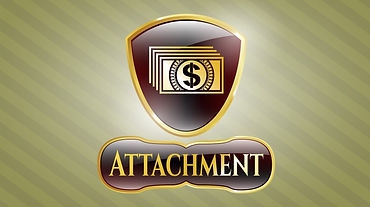Nathan D. Wirtschafter, Corp.
MAKING YOUR CASE IN CALIFORNIA
How a Writ of Attachment Can Lead to Quick Payment of an Unpaid Promissory Note, Contract or Accounts Receivable
Summary: A writ of attachment allows the plaintiff to seize a defendant’s assets before judgment.
In an attachment hearing, the court decides if the plaintiff’s breach of contract claim is more likely than not to succeed. If so, the plaintiff can seize assets before trial. The court makes its determination based on the papers at a hearing.
Four case studies are presented below:
Case Study One: Court Orders Pre-Judgment Attachment of Almost $500,000.
In the case mentioned above, plaintiff hired a company contractor to do an extensive project after being shown a business card with a California license. However, the company’s license had expired. Under California law, providing contractor services without a license is a misdemeanor. California law also mandates that all payments made to an unlicensed contractor must be refunded, dollar for dollar.
At the hearing, our client showed: a series of written agreements, payments records, a summary spreadsheet, and evidence that the contractor’s license had expired. Since the defendant was also sued personally as an alter ego of the company-contractor, our client provided bank records proving the defendant’s deposit of $135,000 of company funds from our client into a private account, along with evidence that the defendant was a corporate officer and director of the company contractor.
The court agreed with our client’s position and issued the right to attach order and writ of attachment for just under $500,000. Defendant owns a house with significant equity. Therefore, our client recorded an attachment lien against the defendant’s house prior to entry of judgment following a court trial.
Case Study Two: Application for $900,000 Attachment Leads to Settlement.
In another lawsuit, our client, a technology staffing company, sought payment of management fees which were to be calculated based upon the defendant’s gross revenues. Defendant refused to provide information showing gross revenues. This law firm won a motion to compel to obtain records showing the defendant’s gross revenues and hence, the precise amounts owed under the management agreement.
Armed with the information obtained in the motion to compel, the firm filed an application for a writ of attachment. This office sought to seize “all corporate property,” which might have forced the defendant into bankruptcy. The hearing was set six months before trial. On the evening before the attachment hearing, the parties reached a confidential financial settlement.
Case Study Three: Federal Court Attachment Application for Over $1.25 Million Interrupts Company Sale and Leads to Settlement.
In a federal court case, our international client sought payment for various textiles shipped internationally to a California bedding manufacturer. During the litigation, the defendant-manufacturer began negotiations to sell the company, which could have left our client without legal recourse.
After this firm filed an application for a writ of attachment, the parties were able to reach an agreement, secured by a UCC lien. Upon completion of the defendant-manufacturer’s sale, our client received a sizeable settlement payment out of the sale proceeds.
Case Study Four: Demand Letters Threatening Writ of Attachment Lead to $850,000 Settlement.
In a dispute in the health care field, over unpaid accounts receivables, this law firm sent two letters on behalf of a business creditor. The first letter was a pointed demand for payment of $850,000. The debtor failed to respond. The second letter threatened attachment proceedings yet invited a negotiated resolution.
The debtor was represented by experienced business litigation counsel and a 700+ attorney law firm. However, the evidence in favor of attachment was strong and the trial judge would likely have granted an attachment in the amount of $1 million, based on principal owed, interest until trial, and anticipated attorneys fees and costs. In the end, the debtor agreed to payment in full, with interest.
Tips for Creditors
A creditor with an unpaid promissory note, contract or accounts receivable should certainly consider filing an application for a writ of attachment at an early stage in the litigation process. While the application is difficult to prepare and time-consuming, it is almost always cost-effective because in most cases it will shorten the legal proceedings.
Nathan Wirtschafter, Esq. is a California business trial attorney. His law practice encompasses a broad range of business matters, and he represents clients in state and federal courts, arbitration and mediation. He can be reached at (818) 660-2518 and ndw@ndwlaw.com.
Back to Articles Page.

A "writ of attachment" allows a creditor to seize the debtor's assets before trial.
This is a powerful tool that often leads to resolution of business litigation without the expense and delay of trial.
We have filed writs of attachment in several cases, leading to excellent results for our clients.